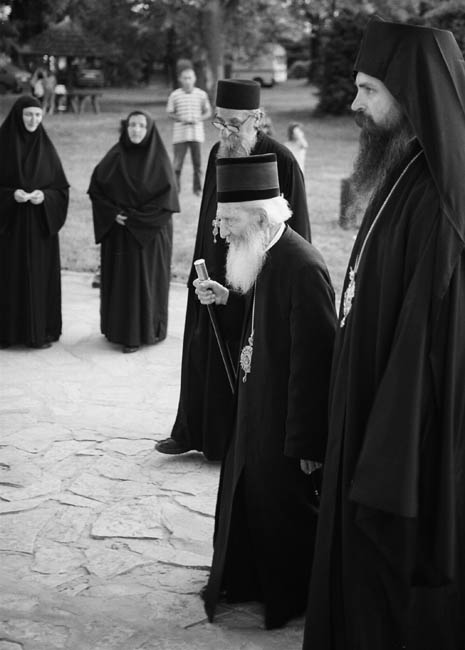|
Patriarch Paul I (other)
{{disambig, tndis ...
Patriarch Paul I may refer to: * Paul I of Constantinople, Patriarch in 337–339, 341–342 and 346–350 * Patriarch Paul of Alexandria, Greek Patriarch of Alexandria in 537–542 * Paul I, Serbian Patriarch, Archbishop of Peć and Serbian Patriarch c. 1530 to 1541 * Paul Peter Massad, Maronite Patriarch of Antioch in 1854–1890 * Pavle, Serbian Patriarch, 44th Patriarch of the Serbian Orthodox Church, in 1990–2009 See also *Paul I (other) Paul I may refer to: *Paul of Samosata (200–275), Bishop of Antioch *Paul I of Constantinople (died c. 350), Archbishop of Constantinople *Pope Paul I (700–767) *Paul I Šubić of Bribir (c. 1245–1312), Ban of Croatia and Lord of Bosnia *Paul ... [...More Info...] [...Related Items...] OR: [Wikipedia] [Google] [Baidu] |
Paul I Of Constantinople
Paul I or Paulus I or Saint Paul the Confessor (died c. 350), was the sixth bishop of Constantinople, elected first in 337 AD. Paul became involved in the Arian controversy which drew in the Emperor of the West, Constans, and his counterpart in the East, his brother Constantius II. Paul was installed and deposed three times from the See of Constantinople between 337 and 351. He was murdered by strangulation during his third and final exile in Cappadocia. His feast day is on November 6. Biography He was a native of Thessalonica, a presbyter of Constantinople, and secretary to the aged bishop Alexander of Constantinople, his predecessor in the see. Both the city and its inhabitants suffered much during the Arian controversies. No sooner had Alexander breathed his last than the Arian and Orthodox parties came into open conflict. The Orthodox party prevailed; in 337 Paul was elected and consecrated by bishops who happened to be at Constantinople in the Church of Peace, close to wha ... [...More Info...] [...Related Items...] OR: [Wikipedia] [Google] [Baidu] |
Patriarch Paul Of Alexandria
Patriarch Paul of Alexandria was Greek Patriarch of Alexandria between 537 and 542. He was elected Patriarch in 537 when the Greek Church of Alexandria, which had previously recognized the Miaphysite Theodosius I, then exiled Gainas. He was the first Chalcedonian to be elected Patriarch since 482. He was deposed by the Synod of Gaza, but later reinstated. This election was the final split between the Miaphysite and Orthodox lineage, which lasts until today. According to Procopius, when Justinian made Paul patriarch, he gave him authority over the ''praefectus Aegypyi'', Rhodon. As patriarch, Paul’s first act was to have Psoes, a Miaphysite deacon who wrote in Coptic and was a thorn in the government’s side, delivered to Rhodon to be tortured to death. The people of Alexandria revolted in fury, and to pacify them Justinian recalled Rhodon and executed him in Constantinople la, Constantinopolis ota, قسطنطينيه , alternate_name = Byzantion (earlier Greek name), ... [...More Info...] [...Related Items...] OR: [Wikipedia] [Google] [Baidu] |
Paul I, Serbian Patriarch
Serbian Patriarch Pavle I ( sr-cyr, Српски патријарх Павле I; 1527–1541) was the Archbishop of Peć and self-proclaimed Serbian Patriarch from around 1530 to 1541. He tried to end the long period of vacancy of the Serbian Patriarchal Throne, with limited and temporary success. Biography As the Metropolitan of Smederevo, he managed with the help of notable Serbs and some Ottoman officials to take control over the Archiepiscopal see of Peć, and worked toward its renewed autocephaly, recreating the Serbian Patriarchate of Peć that had been vacant since 1463 and formally abolished by the Ottomans, who transferred all Serbian eparchies to the jurisdiction of the Archbishopric of Ohrid. Most of the higher clergy, however, supported the Archbishop Prohor of Ohrid, and on the Church assembly on 13 March 1532 anathematized Pavle and his followers. After some time Pavle made peace with Prohor, and recognized his supreme jurisdiction, but later began a more activ ... [...More Info...] [...Related Items...] OR: [Wikipedia] [Google] [Baidu] |
Paul Peter Massad
Paul I Peter Massad (born 16 February 1806 in Ashqout, Lebanon – died on 18 April 1890 in Bkerké, Lebanon) (or Boulos Boutros Massaad, ''Mas'ad'', ar, بولس الأول بطرس مسعد) was the 70th Maronite Christianity in Lebanon, Maronite List of Maronite Patriarchs, Patriarch of Antioch from 1854 until his death in 1890. Life Paul Peter Massad was born in the village of Ashqout, in the Keserwan District, Lebanon on February 16, 1806. He studied in the seminary of 'Ain-Ourakat and later in Rome in the College of the Propaganda where he remained seven years. Returned in Lebanon, he became secretary of Patriarch Joseph Peter Hobaish, who ordained him as a Priesthood (Catholic Church), priest on June 13, 1830. Patriarch Joseph Peter Hobaish consecrated Paul Peter Massad titular bishop of Tarsus, Mersin, Tarsus on March 28, 1841, and appointed him as his own spiritual vicar. After Patriarch Joseph Ragi El Khazen's death, Paul Peter Massad was elected patriarch of Antioch ... [...More Info...] [...Related Items...] OR: [Wikipedia] [Google] [Baidu] |
Pavle, Serbian Patriarch
Pavle ( sr-cyr, Павле, ''Paul''; 11 September 1914 – 15 November 2009) was the patriarch of the Serbian Orthodox Church from 1990 to his death. His full title was ''His Holiness the Archbishop of Peć, Metropolitan of Belgrade and Karlovci, and Serbian Patriarch Pavle''. Before his death, he was the oldest living leader of an Eastern Orthodox church. Because of poor health, he spent his last years in the Military Medical Academy in Belgrade, while his duties were carried out by Metropolitan Amfilohije. Early life Pavle was born as Gojko Stojčević (Гојко Стојчевић) in the village of Kućanci near Magadenovac, then part of Austria-Hungary (present-day Croatia). He lost both of his parents in childhood, and was raised by an aunt. After finishing elementary school, Pavle graduated from a gymnasium in Belgrade, then studied at the seminary in Sarajevo. After finished Seminary, Gojko entered University of Belgrade where he studied Theology and Medicine ... [...More Info...] [...Related Items...] OR: [Wikipedia] [Google] [Baidu] |
